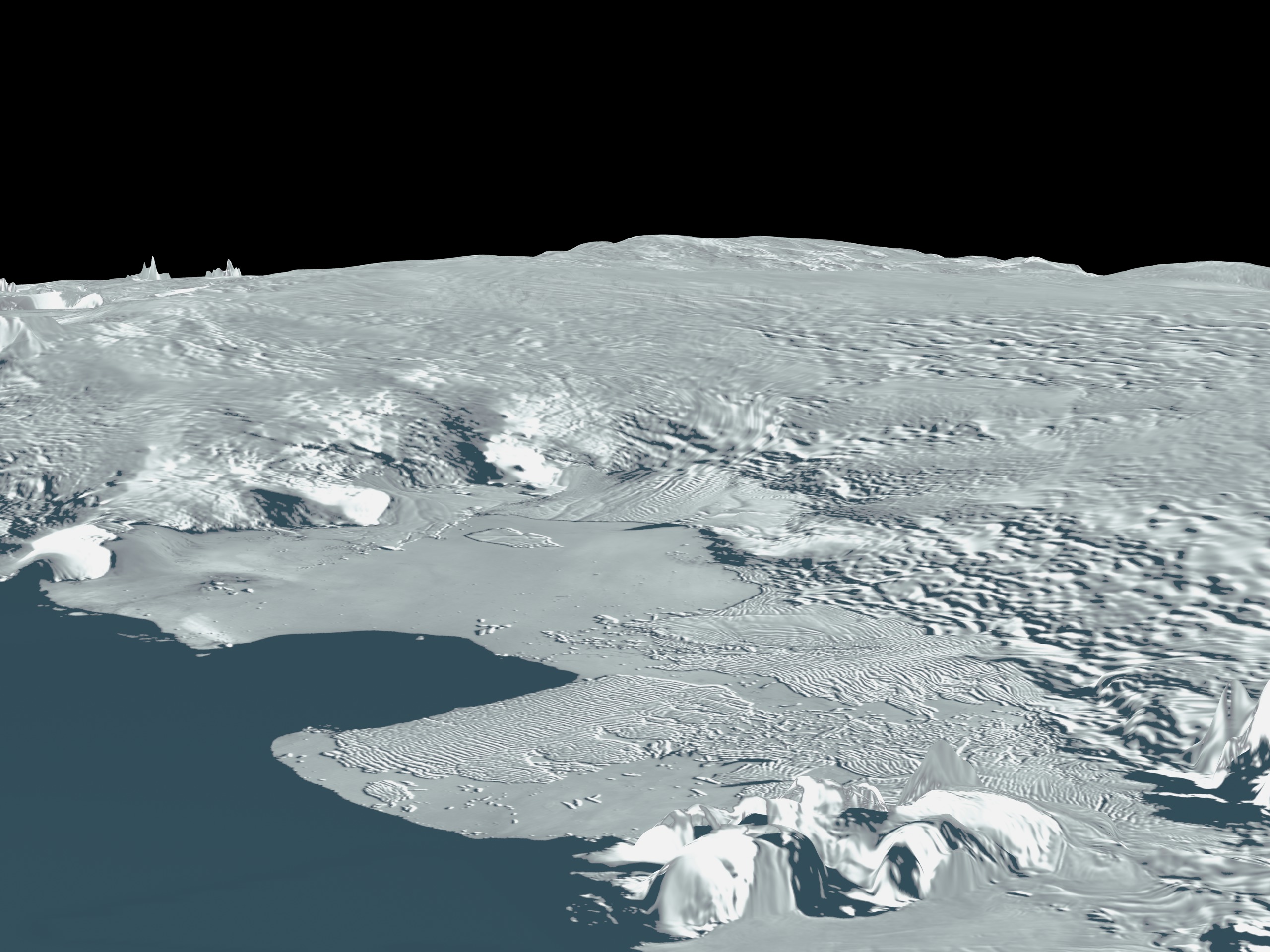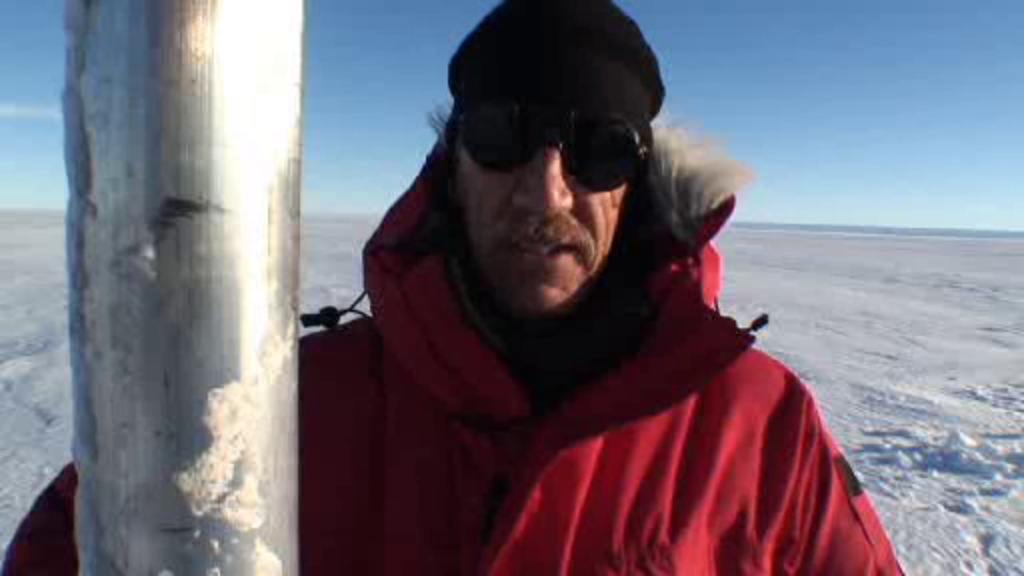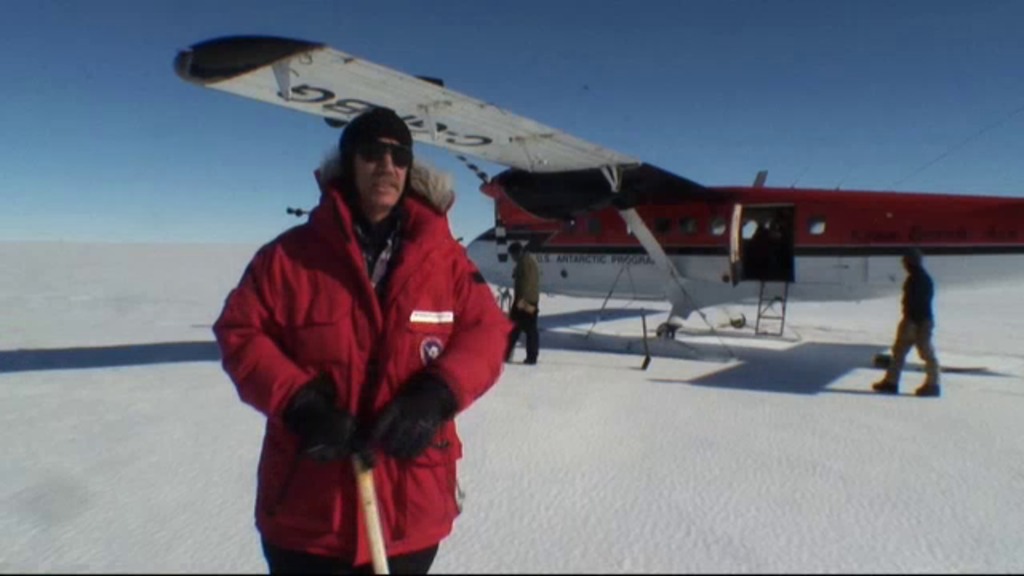Base Camp: West Antarctica
Stretching off the edge of the continent, 1,400 miles west of Antarctica's McMurdo Station, is Pine Island Glacier (PIG)—a massive river of ice 190 miles wide and 30 miles long that satellite measurements reveal is rapidly shrinking in size. Much of the glacier rests on a bed below sea level and global sea levels could increase by three feet or more if the glacier melted completely. The rate of ice loss on the glacier has increased rapidly in recent years, and scientists believe shifting warm water rising from the adjacent deep ocean and circulating in the surrounding Amundsen Sea are rapidly melting the underside of the glacier's floating edge—the ice shelf. To be certain requires measurements taken beneath this floating ice. That's where NASA polar scientist Robert Bindschadler comes in. In 2008, Bindschadler led an expedition to the remote ice shelf by plane, but the dangers of landing on the crevassed surface prevented his team from collecting data. This fall Bindschadler will return via helicopter. The plan on arrival: drill 1,640 feet below the surface and deploy a specially designed instrument that will start continuous measurements of the shifting ocean waters beneath the glacier.

Polar scientists will return to Antarctica in fall 2011 to monitor one of the world's fastest moving glaciers.
Bindschadler first set foot on PIG in 2008 in an attempt to deploy instruments that monitor the moving ice shelf.
On his return trip to PIG in fall 2011 Bindschadler anticipates new discoveries on the horizon.

Researchers have practiced their techniques for drilling through PIG's hard ice in 2011.

Researchers prepare to lower a probe into the hidden water beneath an Antarctic ice shelf.

Pine Island Glacier is an immense ice stream that drains the West Antarctic Ice Sheet into the ocean.
Credits
Please give credit for this item to:
NASA's Goddard Space Flight Center
-
Animators
- Lori Perkins (NASA/GSFC)
- Chris Meaney (HTSI)
- Susan Twardy (HTSI)
-
Video editors
- Victoria Weeks (HTSI)
- Jefferson Beck (UMBC)
-
Interviewee
- Bob Bindschadler (NASA/GSFC)
-
Producers
- Victoria Weeks (HTSI)
- Jefferson Beck (UMBC)
-
Scientist
- Bob Bindschadler (NASA/GSFC)
-
Writers
- Adam P Voiland (Wyle Information Systems)
- Patrick Lynch (Wyle Information Systems)
- Kathryn Hansen (Wyle Information Systems)
- Kayvon Sharghi (USRA)
Release date
This page was originally published on Monday, February 14, 2011.
This page was last updated on Wednesday, May 3, 2023 at 1:53 PM EDT.


